The history of pea research at the John Innes Centre
Below is our pea timevine, covering over 160 years of pea research.
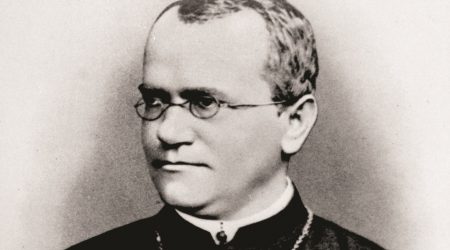 1866
1866
Gregor Mendel - the father of genetics
Gregor Mendel’s pea breeding experiments established the basic understanding of the mechanism for inheritance. William Bateson, the first director of the John Innes, later introduced Mendel's theory and the discipline of genetics to Great Britain.
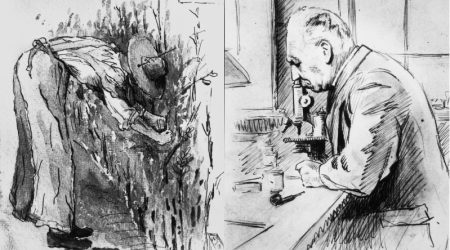 1910
1910
John Innes pea research begins: the Bateson years
The John Innes Institute opened in 1910 and William Bateson began using pea in his research programme to further Mendelian genetics and test the emerging chromosome theory. This marked the beginning of pea research at the John Innes, which continues over a century later.
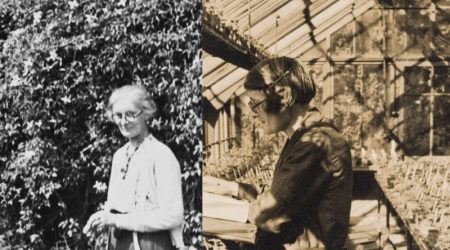 1911
1911
Women scientists and early pea research
Many refer to William Bateson’s fundamental role in developing the study of genetics, but few recognise that his research group consisted primarily of women, some of whom were central to the development of pea research at the John Innes.
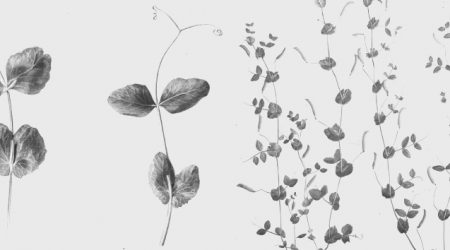 1915
1915
The mystery of the rabbit-eared rogues
Initially, pea research at the John Innes focused on demonstrating and extending the principles of Mendelian inheritance. However, an exception emerged; the rogue pea posed an entirely new and unique enigma as it defied all emerging rules of inheritance. Over 100 years later, scientists are yet to solve the mystery of the rabbit-eared rogues.
 1941
1941
War and peas
The Second World War had a dramatic effect on John Innes pea research due to changing priorities, depleted staff and a lack of available funds. Consequently, pea research was put on hold and ceased to appear in the Institute’s annual reports for two decades.
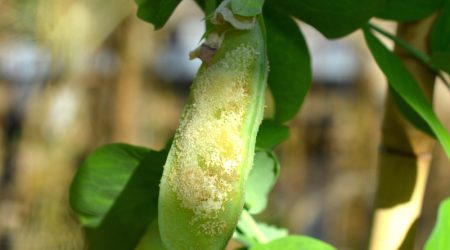 1966
1966
Neoplastic pea pods
While examining the newly acquired John Innes pea collection, Kenneth Dodds observed a particularly peculiar trait: some pea pods were developing unfamiliar genetically controlled tumours or ‘neoplasms’. But what were these bizarre pustular-like growths, and why did they form?
 1970
1970
Pea grand designs: changing pea plant architecture
The ‘semi-leafless’ pea can be considered one of the most important achievements in the history of pea breeding, and one of the most successful applied research outcomes at the John Innes, in collaboration with others. This new pea line addressed several problems facing the pea industry, and impressively now accounts for 100% of UK dry pea production.
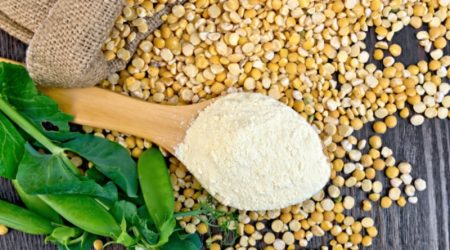 1985
1985
The problem with pea lipoxygenases
As a crop, pea offers a wide range of health and environmental benefits, yet pea seed-derived products remain underutilised. One possible reason for this is due to pea lipoxygenase enzymes, which contribute to undesirable off-flavours. A pea line identified by John Innes researchers in the 1990s, which lacks one of these lipoxygenases, could prove its value now that pea products within the gluten-free market are undergoing an expansion.
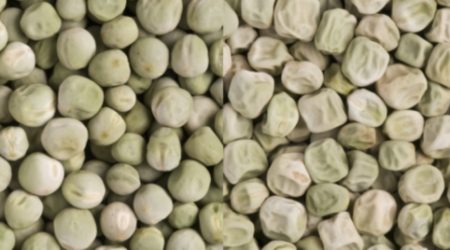 1990
1990
Unravelling the riddle of round and wrinkled pea seeds
The 130 year-old mystery of the genetic basis for Mendel’s wrinkled peas was solved by John Innes scientists. They found that the trait studied by Mendel is linked to an enzyme (SBEI) involved in starch biosynthesis. The SBEI gene is inactive in wrinkled peas, disrupting starch production and resulting in the wrinkled pea seed appearance.
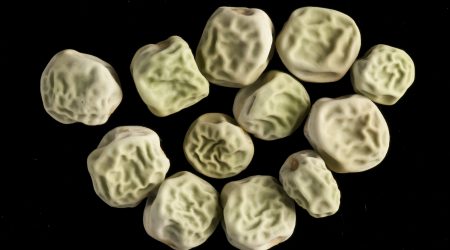 1998
1998
‘Super-sweet’ pea seeds
Extending the work on wrinkled peas and starch content throughout the 1990s, John Innes scientists identified and studied five mutants that influence the seed shape and starch content of pea seeds. One mutant has such a dramatic effect on starch that it produces ‘super-sweet’ pea seeds.
 2005
2005
Cancer fighting pea proteins
Could pea protein help combat cancer? John Innes research indicated that a group of enzyme inhibitors found in pea seeds could help prevent and suppress cancer and inflammatory disorders in the colon.
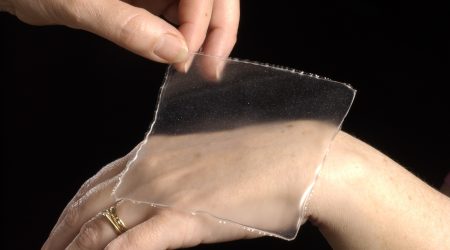 2006
2006
Pea starch: an alternative material to plastic?
How would you feel about wrapping up your sandwiches or applying a dressing to a wound using a product derived from pea? Scientists at the John Innes explored these possibilities using pea starch.
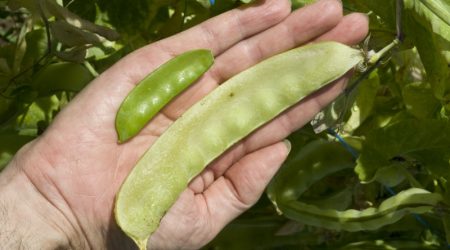 2009
2009
Giant pea pods and germplasm
Mike Ambrose, of the Germplasm Resource Unit at the John Innes, potentially grew the world’s largest mangetout pea pod.
 2010
2010
Unlocking Mendel’s white and purple pea flowers
In a worldwide collaboration, John Innes scientists solved the mystery of another of Mendel’s genes. They became the first to characterize the gene involved in the pigmentation of pea flowers and seed coats. The pigments involved (anthocyanins) have attracted increased interest in recent years due to their antioxidant properties in ‘superfoods.’
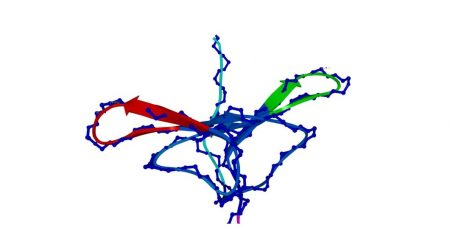 2015
2015
‘Super pea’ to improve protein digestion
John Innes scientists developed a ‘super pea’ that is predicted to enhance protein digestion in humans and livestock. The pea lacks 'trypsin inhibitors', which slow down or impede protein digestion. The ‘super pea’ has potential significance as a high protein food source, which could help reduce the UK’s dependency on soybean imports, as well as having many other benefits.
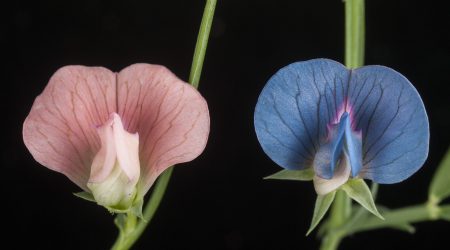 2015
2015
'Stay-green' genes
The appearance of food is considered to be of extreme commercial importance for the human consumption market. Pea seeds naturally appear in a variety of colours from shades of yellow to dark purples, but it is the vibrant green pea that has been exploited widely for food. However pea seeds can lose their green colour at or after seed maturity. In some cases, growers have a very limited window for harvest when seed is at its optimum and a delayed harvest can result in dramatic economic loss, with decreases in value of up to £50 per tonne. Therefore, there is a great need for higher seed colour stability within the pea crop
 2016
2016
Celebrating 150 years of Mendelian genetics
This year marked the 150th anniversary of the publication of Gregor Mendel’s revolutionary “Experiments on plant hybrids” paper, which has been credited with laying the foundation for science-based agriculture and many plant breeding techniques. Find out how the John Innes Centre has been involved with understanding the molecular basis for some of the pea traits that Mendel observed during his famous pea breeding experiments.
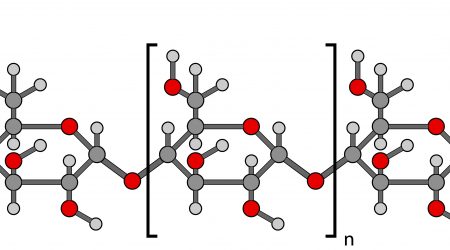 2019
2019
Could pea seed products help defeat diabetes?
In the centenary of the Genetics Society, could pea seed products help defeat diabetes? Some pea seeds contain dietary starches that ‘resist’ digestion and evidence suggests that this resistant starch could help combat type 2 diabetes, a chronic health problem in the UK. Working with partners, the John Innes Centre has contributed their genetic understanding of pea seeds and starch mutations to help provide new insights to glucose responses in humans.
